Headlines and events archive
Displaying 1 - 50 of 1946
You may also find an archive of news published in the media which are related with the Instituto de Astrofísica de Andalucía - CSIC.
Pages

|
20/11/2025 - 12:30
LST Collaboration TBP LST Collaboration |
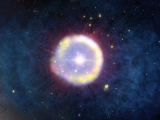
|
20/06/2025
A cosmic signal from the early universe could reveal what the first stars were like The study, published in Nature Astronomy, shows that it will be possible to determine the masses of the first stars formed after the Big Bang The Instituto de Astrofísica de Andalucía (IAA-CSIC) has analyzed how instruments like the REACH antenna and the SKA radio telescope may help reconstruct the nature of these primordial celestial bodies |
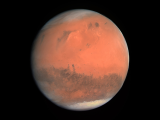
|
16/06/2025
New clues to understanding the loss of the water Mars hosted billions of years ago The study, led by the Institute of Astrophysics of Andalusia (IAA-CSIC) and published in Nature Astronomy, analyzes the role of Mars’ axial tilt in the planet’s water loss The scientific team has incorporated key improvements into the climate model used, allowing for a more accurate representation of current hydrogen escape—and therefore water loss—into space |
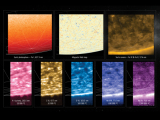
|
12/06/2025
First images of the Sun’s poles: a major milestone in solar exploration The images, captured by the Solar Orbiter mission and released this week, show the south pole of our star for the first time. The Institute of Astrophysics of Andalusia (IAA-CSIC) co-leads the mission’s largest scientific instrument (SO/PHI), which was key to this pioneering observation |
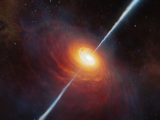
|
09/06/2025
Not all active galaxies are the same: infrared observations reveal two distinct families The work is led by Enrique Pérez Montero, researcher at the Instituto de Astrofísica de Andalucía (IAA-CSIC), who, after losing his sight in the course of his scientific career, studies the intricacies of the cosmos through sound The research focuses on the use of the infrared range to study active galaxy nucleus, considered among the most energetic objects in the universe. |
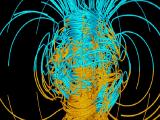
|
16/06/2025 - 18/06/2025
https://indico.iaa.csic.es/event/33/ Granada |

|
06/06/2025
The IAA-CSIC and the UMA sign a contract with the European Space Agency to improve Spanish space surveillance The contract is part of the National Space Surveillance and Tracking Programme (S3T) and the European Space Situational Awareness Programme (SSA) of the European Space Agency (ESA) The project aims to design a cooperative system to optimise astronomical observation for space surveillance and monitoring |

|
03/06/2025 - 05/06/2025
https://www.iaa.es/meetings/nomad-swt-27 Almuñecar |

|
03/07/2025 - 12:30
Increased Hydrogen escape from Mars atmosphere during periods of high obliquity I will talk about a recent study led by IAA-CSIC focused on the atmospheric H escape during high obliquity period in recent Mars (average ~35º in last millions of years). Observations show that current thermal H escape (major water loss process) varies seasonally, with considerable increases during dust storms of both water abundance in the upper atmosphere and H escape rate. Present H-loss rates agree with 3D simulations by the Mars Planetary... Dr. Gabriella Gilli |
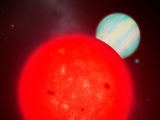
|
04/06/2025
Discovery of a giant planet around a tiny star challenges theories of planet formation The Instituto de Astrofísica de Andalucía (IAA-CSIC) participated in the discovery through key observations with the 1.5-meter telescope at the Sierra Nevada Observatory (OSN), which confirmed the existence of the giant planet The finding contradicts current theories on the formation of giant planets and opens a promising path for future research |

|
28/05/2025
Mysterious cosmic object detected emitting radio and X-ray signals synchronously The study, which reports the first detection of X-ray emission from a long-period radio transient, involves the Instituto de Astrofísica de Andalucía (IAA-CSIC) The finding, made possible by NASA’s Chandra X-ray Observatory and CSIRO’s ASKAP radio telescope, may shed new light on the origin of similar mysterious signals observed elsewhere in the sky |
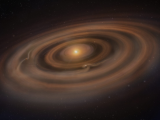
|
21/05/2025
New clues on how planet formation can mask the real properties of their star The Instituto de Astrofísica de Andalucía (IAA-CSIC) co-leads a study exploring the connection between the presence of a planet around a star and the star’s properties The study, focused on intermediate-mass stars, has revealed particularly significant results compared to what is already known about low-mass stars |

|
03/06/2025 - 12:30
Towards an observationally motivated AGN dusty torus model Several models of nuclear dust in active galactic nuclei (AGN) have been presented in the literature to determine its physical and geometrical properties, usually assuming the dust density distribution as the main aspect producing differences in the mid-infrared (MIR) emission of AGNs. My PhD research investigates the physical and chemical properties of dust in the torus of AGNs using MIR spectral analysis and radiative transfer (RT) modeling.... Ulises Reyes Amador |

|
22/05/2025 - 12:30
Galaxies Hidden in the Forest as a new BAO tracer (and other applications) The acceleration of the expansion rate of the Universe is yet to be explained. Several models, including LCDM, try to explain this acceleration. LCDM bases its explanation on a mysterious dark energy, adding up to ~75% of the total energy density of the Universe. Other models present modified theories of gravity to explain this effect. But which one is correct? The expansion history of the Universe is a great observable to discriminate between... Dr. Ignasi Pérez Rafols |
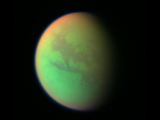
|
14/05/2025
New findings on Titan reinforce its astrobiological interest: active chemistry, clouds and methane rain Data from three instruments aboard the James Webb Space Telescope offer fresh insights into Titan’s atmosphere and chemistry—among the most complex and stable in the solar system One of the study’s key findings, involving participation from the Instituto de Astrofísica de Andalucía (IAA-CSIC), is the first direct detection of the methyl radical (CH₃) in Titan’s atmosphere, confirming major predictions about the moon’s rich organic chemistry |
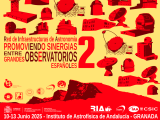
|
10/06/2025 - 13/06/2025
https://riastronomia.es/promoviendo-sinergias-entre-grandes-observatorios-espano… Granada |

|
27/05/2025 - 12:30
Jets in Planetary Nebulae At the end of the 20th century, we thought we had a solid understanding of how low-mass stars evolved into planetary nebulae. However, by studying the stages leading up to these nebulae, we discovered a puzzle: the energy needed to form them was too large to be explained by traditional models. This revelation led us to explore a more complex scenario: the interaction of binary stars. The gravitational energy and angular momentum of these... Dr. Guillermo García Segura |

|
06/05/2025
A study led by the IAA-CSIC reveals the origin of X-ray emission in jets from supermassive black holes The research, headed by the Instituto de Astrofísica de Andalucía (IAA-CSIC), solves a longstanding mystery about the particles responsible for X-ray emission in blazars IXPE, the joint mission of NASA and the Italian Space Agency, along with the Sierra Nevada Observatory, played a key role in obtaining the data that enabled identification of the mechanism behind this extreme phenomenon |

|
05/06/2025 - 12:30
SO colloquium: What can we expect and hope for in quantum computing? Quantum computing can solve specific problems much faster than classical computing concepts. Promising applications include material science and chemistry as well as optimizations problems Once quantum computing is fully matured, it can even crack the most commonly used encryption methods and thus make emails, credit cards, bank transactions, etc. insecure. In recent years, quantum computing has made significant progress, which raised interest... Dr. Michael Hartmann |
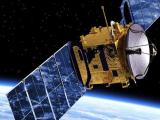
|
26/05/2025 - 29/05/2025
https://indico.iaa.csic.es/event/29/ Granada |
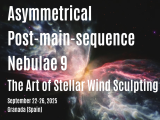
|
22/09/2025 - 26/09/2025
https://www.granadacongresos.com/apn9 Granada |
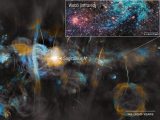
|
03/04/2025
The James Webb Telescope reveals how stars form in one of the most extreme regions of our galaxy Two studies co-led by the Instituto de Astrofísica de Andalucía (IAA-CSIC) have examined the center of our galaxy with unprecedented detail, thanks to observations from the James Webb Space Telescope The findings could help clarify why star formation in one of the innermost regions of the Milky Way is surprisingly low despite having conditions that should favor this process |

|
16/10/2025 - 17/10/2025
https://indico.iaa.csic.es/event/26/ Granada |

|
17/06/2025 - 12:30
SO Colloquium: The multiple aspects of Star-Planet Interactions Star-Planet Interactions (SPIs) encompass a range of physical processes that occur in close-in exoplanetary systems, where the proximity between a star and its planet leads to complex magnetic, gravitational, and atmospheric effects. These interactions can influence both stellar activity and planetary evolution, making them crucial to our understanding of exoplanetary environments, habitability, and observational signatures across multiple... Dr. Rim Fares |
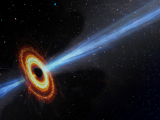
|
24/03/2025
Acceleration in supermassive black hole jets that defies theoretical predictions discovered A study co-led by the Instituto de Astrofísica de Andalucía (IAA-CSIC) reveals deviations from established models of the jets formed in supermassive black holes The finding is based on observations from the Event Horizon Telescope (EHT), whose high resolution has allowed for an unprecedented analysis of jets at close distances from supermassive black holes in the active cores of certain galaxies |

|
20/03/2025
PANIC, the first 4K infrared camera to explore the European sky The Instituto de Astrofísica de Andalucía (IAA-CSIC), together with the Max-Planck-Institut für Astronomie (MPIA) in Heidelberg, Germany, has developed PANIC, a wide-field infrared camera for the 2.2-meter telescope at the Calar Alto Observatory in Almería, Spain PANIC, which operates in the near-infrared wavelength range, will be capable of studying star clusters, galaxies, nebulae, stars, exoplanets, and even the smallest bodies in our Solar... |

|
08/04/2025 - 12:30
Synthetic ngVLA Observations of Ionized Gas in Massive Protostars and Future Prospects for Protoplanetary Disk Studies with ngVLA and SKA. The study of protoplanetary disks is essential for understanding stellar evolution and the origins of planets. However, these systems present significant observational challenges due to their small angular size, low surface brightness, and complex structure. Radio interferometry provides a unique advantage by observing dust and gas at wavelengths that penetrate the dense regions where the protoplanetary disk forms. The upcoming Next Generation... Dr. Miguel Jáquez |

|
01/04/2025 - 12:30
A Minion in PANIC arrives to Calar Alto Observatory Calar Alto has a new tenant: PANIC, the PAnoramic Near-Infrared Camera for Calar Alto. PANIC is a project jointly developed by the MPIA in Heidelberg, Germany, and the IAA in Granada, Spain, for the Calar Alto Observatory (CAHA; Almería, Spain). This instrument can work with the 2.2 m and 3.5 m telescopes. Its original detector has been recently replaced by a monolithic HAWAII-4RG, therefore the instrument covers now a field of view of 26×26... Ana Guijarro, Vianak Naranjo, Antonio J. García, José M. Ibáñez and Sara Muñoz |

|
23/10/2025 - 12:30
WST: The Wide Field Spectroscopic Telescope The WST project aims to design and construct an innovative 10-metre class wide-field spectroscopic survey telescope (WST) in the southern hemisphere. It will feature the parallel operation of two cutting-edge instruments: a high-multiplex (30,000), large field-of-view (3 square degrees) multi-object spectrograph (MOS) operating in both low- and high-resolution modes, and a giant panoramic integral field spectrograph (IFS). WST’s ambitious top... Prof. Roland Bacon |

|
08/05/2025 - 12:30
SO Webloquium: Protecting Dark and Quiet Skies from Satellite Interference: Challenges and Mitigation Efforts The rapid deployment of satellite megaconstellations is fundamentally changing the sky, posing a growing challenge to both optical and radio astronomy. While the issue is widely acknowledged, the full extent of its impact, the ongoing mitigation efforts, and the potential future scenarios remain less well understood. The International Astronomical Union (IAU) established the Centre for the Protection of Dark and Quiet Skies (CPS) to coordinate... Dr. Federico Di Vruno |
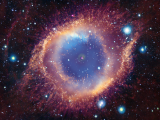
|
05/03/2025
Planet's destruction may explain mysterious X-Ray signal emitted by a dying star After decades of tracking an enigmatic X-ray signal from a star in its final life stages, this study, co-led by the Instituto de Astrofísica de Andalucía, may have finally uncovered its origin: the destruction of a nearby planet Although the Sun is currently about 4.6 billion years old and is expected to take another 5 billion years before exhausting its hydrogen and evolving into a red giant, this study explores potential fates of the planets... |

|
26/02/2025
Spain, a pioneer in the global network of SKA regional centres The Spanish prototype of the SKA Regional Centre, developed by IAA-CSIC, becomes the first centre to successfully complete its integration into SRCNet0.1, the first operational version of the international network that will form the scientific core of the Square Kilometre Array Observatory (SKAO) |
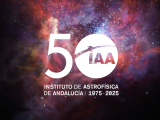
|
01/01/2025
50 years of the Instituto de Astrofísica de Andalucía (IAA-CSIC) Half a century at the forefront of astrophysical research and space exploration. Five decades driving knowledge, technology and passion for the universe. Fifty years bringing the cosmos closer to you. Instituto de Astrofísica de Andalucía-CSIC |

|
29/05/2025 - 12:30
SO colloquium: The PARSEC view of star formation and the interstellar medium in galaxies The PARSEC project is a multiwavelength investigation of the centers of galaxies at parsec scales. In this presentation, I will provide a direct visualization of the star formation process in the centers of galaxies, resolved into their building blocks—the star clusters. I will address the triggering process of star formation in a range of galaxies with different morphologies and levels of nuclear activity. This triggering process will be... Dr. Almudena Prieto |

|
01/01/2025 - 09:15
TBP TBP TBP |

|
03/04/2025 - 12:30
Phase curve fitting in the context of large-scale photometric surveys Nowadays, we are experiencing a revolution in astronomical surveys. Thanks to ground-based and orbiting telescopes, millions of observations of asteroids in various photometric filters are available. The main objective of our project is to develop tools for reading, processing, and analyzing large volumes of data. We’ve successfully determined phase curves for thousands of asteroids in orange and cyan filters from the latest ATLAS Solar System... Dr. Milagros Colazo |

|
25/03/2025 - 12:30
What Stops Star Formation in Isolated Dwarf Galaxies in the Most Underdense Cosmic Regions? The shallow potential wells of low-mass galaxies, commonly known as dwarf galaxies, make them highly susceptible to environmental effects, often leading to the complete cessation of star formation. But is quenching solely driven by external forces in harsh environments, or can dwarf galaxies also self-quench through mechanisms like strong stellar winds or supernova feedback, independent of external influences? In this contribution, I present our... Dr. Bahar Bidaran |

|
10/02/2025
The IAA participates in PLATO, the first scientific mission to fly aboard the new European rocket Ariane 6 On January 29, during the European Space Conference in Brussels (Belgium), the European Space Agency (ESA) signed an agreement with the space transportation company Arianespace to launch its PLATO mission at the end of 2026 The Instituto de Astrofísica de Andalucía (IAA-CSIC), a member of the PLATO Spain consortium, is participating in the mission through the development of its two main electronics units and the scientific planning prior to its... |

|
23/06/2025 - 27/06/2025
https://talesofblackholes.iaa.csic.es/ Granada |

|
11/02/2025 - 12:30
An Unusual Triple System: CN Lyn Triple star systems hold significant astrophysical importance, offering profound insights into stellar evolution, dynamical interactions, and mass transfer processes. Due to their complexity compared to single or binary star systems, triple systems facilitate a more comprehensive understanding of stellar processes from formation to final stages. Thanks to large photometric surveys, such as Kepler, researchers were able to detect triple systems... Dr. Gökhan Yücel |

|
11/03/2025 - 12:30
J-HERTz: J-PLUS Heritage Exploration of Radio Targets at z < 5 In this talk, I will present J-HERTz, the J-PLUS Heritage Exploration of Radio Targets at z... David Fernández Gil |

|
10/04/2025 - 12:30
Impacts of Cosmic Dust in the Atmospheres of Mars and Venus Cosmic dust particles are produced from the sublimation of comets and by collisions between asteroids. Because the particles enter a planetary atmosphere at hypersonic velocities, collisional heating with air molecules causes a fraction of them to melt, leading to vaporization of their metallic constituents. The injection of these elements causes a wide variety of atmospheric phenomena in the terrestrial atmosphere, including the formation of... Dr. John Plane |

|
26/02/2025 - 12:30
ORCA-TWIN: Fast & low read noise CMOS camera project for planetary science and astrophysics The emerging German Center for Astrophyics (DZA) aspires - next to activities for gravitational wave astronomy, radio astronomy, and big data - to engage in CMOS sensor development with the local semiconductor industry and international partners. In parallel to establishing a first detector lab that has become operational recently, two off-the-shelf CMOS cameras were procured to explore hands-on the capabilities for time domain astronomy and solar... Dr. Martin M. Roth |

|
22/01/2025
Advances in the study of M87*: Unveiling details of the black hole's turbulent accretion flow The EHT collaboration, which includes the Instituto de Astrofísica de Andalucía, has made progress in studying the supermassive black hole M87*, located at the center of the galaxy M87 The analysis conducted by the scientific team, combining observations from 2017 and 2018, has revealed new insights into the structure and dynamics of the plasma near M87*'s event horizon |
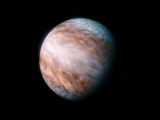
|
21/01/2025
Supersonic jet stream detected at the equator of a giant exoplanet The Instituto de Astrofísica de Andalucía is part of the international team that has identified the fastest wind ever measured on a planet, recorded in the atmosphere of the giant exoplanet WASP-127b, located more than 500 light-years from Earth This discovery, which provides unique information about extreme weather on a distant world, was achieved using the CRIRES+ instrument, installed on one of the four telescopes of the Very Large Telescope... |
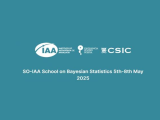
|
05/05/2025 - 08/05/2025
https://indico.iaa.csic.es/event/24/ Granada |

|
25/02/2025 - 12:30
Chemical Fingerprints of Galaxy Evolution I will summarise the main projects we are currently working on that use the chemical abundances and pattern as fossil records of galaxy evolution. In particular, the chemical abundances of the star-forming regions of galaxies contain valuable information about their assembly histories, as well as about the processes that regulate the history of star formation and the mixing of chemical elements. In particular, they encode the history of recent... Dr. Patricia B. Tissera |

|
03/02/2025 - 20/02/2025
https://indico.iaa.csic.es/event/22/ Granada |
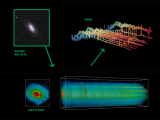
|
15/01/2025
Data sonification: a new way to study the universe A team co-led by the Instituto de Astrofísica de Andalucía has created ViewCube, an innovative tool that not only allows for the visualization of astronomical data but also enables its auditory experience This breakthrough adds a new sensory dimension to the analysis of complex data while promoting inclusion and accessibility, facilitating the active participation of people with visual impairments in the study of galaxies |

|
06/03/2025 - 12:30
SO Colloquium: Gravitational wave astrometry with the SKAO Pulsar timing array detection of a gravitational wave background represents a milestone in the field of gravitational wave astronomy. However, the origin of such a signal is still a matter of intense debate: while supermassive black hole binaries formed as a result of galaxy mergers represent the most obvious candidate for the gravitational wave signal, many "new Physics" models can potentially explain at least part of the detected background.... Dr. Nicola Bellomo |